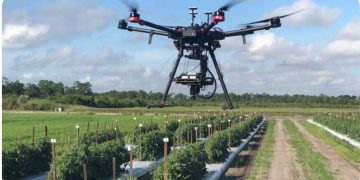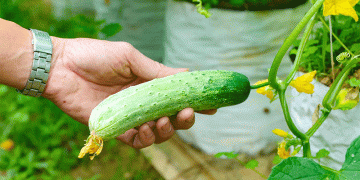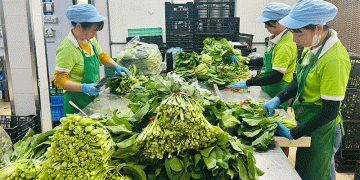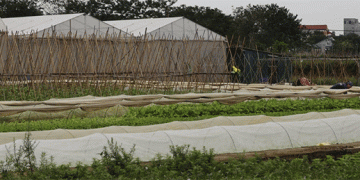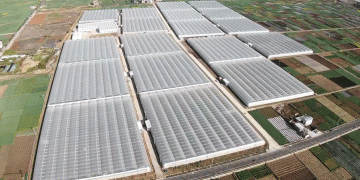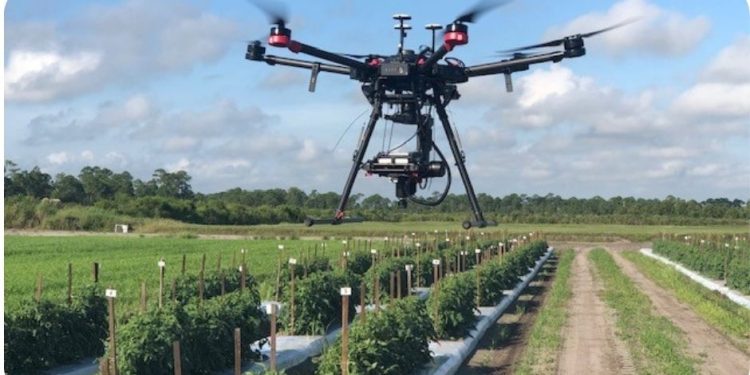Plant detectives and engineers from the University of Florida are using artificial intelligence to find a disease early so growers who produce summer squash can keep it under control. Early detection gives farmers a fighting chance at a better crop.
Summer and winter squash are grown commercially throughout the state, particularly in southeast and southwest Florida. In 2019, Florida growers harvested 7,700 acres of squash, with a production value of $35.4 million, according to the USDA National Agricultural Statistics Service. But powdery mildew disease, common throughout the world, can decrease yields.
“The ideal environment for powdery mildew to infect is humid weather, high-density planting and shade,” said Yiannis Ampatzidis, a UF/IFAS assistant professor of agricultural and biological engineering and co-author of a new study on early detection of powdery mildew, published in the journal Biosystems Engineering.
For the study, UF/IFAS researchers used a sensing system attached to drones to collect spectral data of powdery mildew on summer squash in the fields and labs of the UF/IFAS Southwest Florida Research and Education Center.
UF/IFAS researchers used technology that does not rely on visual symptoms to detect powdery mildew, Ampatzidis said. Human eyes can see only the light part of the electromagnetic spectrum. This technology can “see” more. Thus, researchers used this study to identify the best wavelengths for early powdery mildew detection – on leaves that either had no symptoms or exhibited early symptoms.
Researchers used machine learning – a subset of artificial intelligence – that can “learn” from spectral data to detect powdery mildew. The data came from drones and ground-based sensing systems. The trained machine-learning model identified powdery mildew in different disease development stages, Ampatzidis said. The machine-learning system builds a mathematical model to detect powdery mildew without being programmed by a human to follow specific steps.
With the images and spectral reflectance analysis of squash leaves, scientists detected powdery about 95% of the time. In fact, even without visible symptoms of the disease, the technology showed researchers the disease 82% to 89% of the time.
“It is crucial to identify powdery mildew early, since the disease spreads rapidly and the lesions increase in size, developing a dusty white or gray coating,” said Ampatzidis, faculty advisor to Jaafar Abdulridha, the UF/IFAS post-doctoral researcher who led the study.
Pamela Roberts, a UF/IFAS plant pathology professor, needs data from engineers like Ampatzidis, to help her find diseases in the earliest stages. She compares it to early detection of human diseases.
“Early detection of any health problem, whether in human or plants, gives the best chance of controlling it through early intervention,” said Roberts, a co-author of the study. “Likewise, plant diseases are more easily controlled early when the pathogen population is low, compared to later in the epidemic.”
“Additionally, this technology may actually decrease the use of chemical sprays, by eliminating applications that could be made before there is actually any disease to control,” she said. “Since powdery mildew is a chronic problem on squash in southwest Florida, it is only a question of when, not if, the disease will appear. Accurate timing of fungicides, whether in conventional or organic farming, can increase the efficacy of the product and decrease losses.”
The main symptoms of powdery mildew are white spots or patches, usually on the leaves. Diagnosing powdery mildew in early infection stages is difficult because of symptoms on lower, more mature leaves that are often covered by other leaves.
“In short, a disease could change the leaf properties and affect the amount of light being reflected from leaves in areas outside of the visible spectrum, which humans cannot see,” Ampatzidis said.
– Brad Buck, University of Florida
